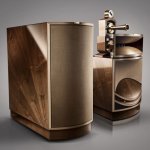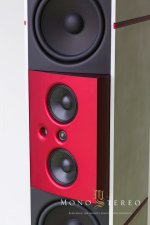TheOctopus
Banned
- Joined
- Apr 4, 2013
- Messages
- 1,622
Yes, my OP was referring to marketplace “requirements” rather than a true design imperative, and I am still curious to hear others’ thoughts. I should make it clear that I personally don’t think exotic or other materials are necessary or important in SOTA speaker design or implementation, but some high-end (and not so high-end) manufacturers would apparently like us to believe they are
It is no different than a Bugatti Veyron or a Lamborghini Veneno roadster. Why settle for $22k Honda when there is a $8M dollar car out there and one has the money to keep the EGO burning bright? The passion of the engineers making luxury products is met with the applause of those who are inspired by such marvels. How else is a speaker or a car or a yacht manufacturer supposed to separate those looking for absolute cutting edge of technological toys from their money when they are offering something less than cutting edge?


